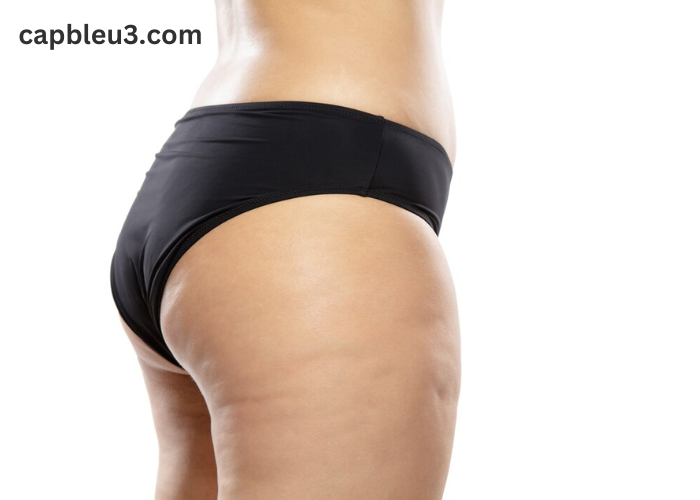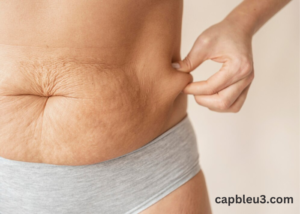
Cellulite is a common cosmetic concern characterized by the skin’s lumpy, dimpled appearance, often likened to an ‘orange peel’ or ‘cottage cheese’. While not medically harmful, it can affect self-confidence and body image, especially among women. Genetic predisposition, hormonal changes, and lifestyle factors contribute to its development, making it a challenge for many individuals. Addressing cellulite involves understanding its underlying mechanisms and adopting various treatments and lifestyle changes to reduce its appearance and promote overall well-being.
Understanding Cellulite:
Cellulite results from fat deposits pushing through the connective tissue beneath the skin, typically occurring in areas with significant fatty tissues like the thighs, buttocks, and abdomen. Genetics, hormones, and physiological differences contribute to its formation, with factors like ageing and lifestyle choices exacerbating its prominence. Cellulite manifests in four stages, ranging from subtle changes in skin texture to visible dimples and palpable bumps, depending on severity.
Cellulite formation is influenced by various factors, including genetics, hormones, and lifestyle choices. Genetics determine how fat is distributed in the body, while hormonal fluctuations can affect fat storage and connective tissue integrity. For some individuals, seeking cellulite reduction treatment becomes a priority as they strive to minimize its appearance. Physiological differences such as skin thickness and connective tissue structure also play a role in cellulite development. Factors like ageing, weight gain, lack of physical activity, and poor diet can exacerbate cellulite, making it more noticeable over time.
Misconceptions and Myths about Cellulite:
Contrary to popular belief, cellulite isn’t necessarily related to being overweight, as even lean individuals can have it. Creams and lotions offer limited efficacy in reducing cellulite, primarily moisturizing the skin’s outer layer. While exercise improves circulation and skin firmness, it doesn’t eliminate cellulite due to its multifactorial nature. Understanding these misconceptions is crucial in adopting effective cellulite reduction strategies.
Cellulite is often misunderstood, leading to misconceptions about its causes and treatments. One common myth is that cellulite only affects overweight individuals, but in reality, people of all body types can develop cellulite. Another misconception is that topical creams and lotions can eliminate cellulite, but these products primarily moisturize the skin and have limited efficacy in reducing cellulite. Additionally, while exercise can improve circulation and skin tone, it cannot eliminate cellulite due to its complex nature involving factors like genetics and hormones.
Cellulite Reduction Treatments:
Cellulite treatments encompass professional therapies, over-the-counter products, and natural remedies. Professional methods like laser treatment and endermologie offer targeted approaches, while over-the-counter options include creams and lotions enriched with retinol or caffeine. Natural remedies focus on massage techniques, herbal supplements, and lifestyle changes. Choosing the right treatment involves considering severity, body type, and lifestyle factors, with professional consultation recommended for personalized plans.
There are various cellulite reduction treatments available, ranging from professional therapies to over-the-counter products and natural remedies. Professional treatments, such as laser therapy and endermologie, target cellulite using advanced technologies and techniques. Over-the-counter products, such as creams and lotions, often contain ingredients like retinol or caffeine that claim to reduce cellulite when applied regularly. Natural remedies, including massage techniques, herbal supplements, and lifestyle changes, offer alternative approaches to cellulite reduction. It’s essential to consider factors like severity, body type, and lifestyle when choosing a cellulite reduction treatment, and consulting with a healthcare provider can help determine the best approach for individual needs.

Lifestyle Changes That Can Help Reduce Cellulite:
Diet plays a significant role in cellulite production and reduction, with a balanced diet promoting leaner body mass and improved skin elasticity. Hydration is essential for optimal skin health, maintaining elasticity and resilience, while exercise promotes blood flow, tones muscles, and aids in weight loss. Stress management is critical for hormone regulation, as chronic stress can disrupt hormonal balance and contribute to cellulite accumulation. Adopting these lifestyle changes can help reduce the appearance of cellulite and promote overall well-being
Making lifestyle changes can significantly impact cellulite reduction and overall well-being. A balanced diet rich in fruits, vegetables, lean proteins, and healthy fats can promote weight loss and improve skin health. Adequate hydration is essential for maintaining skin elasticity and hydration levels. Regular exercise, including cardiovascular exercise and strength training, can help improve circulation, tone muscles, and reduce the appearance of cellulite. Additionally, managing stress through techniques like meditation, deep breathing, and yoga can help regulate hormone levels and reduce cellulite accumulation. By incorporating these lifestyle changes, individuals can effectively reduce cellulite and improve their overall health and well-being.
In conclusion, cellulite is a common cosmetic concern that affects many individuals, particularly women. Understanding its underlying causes and adopting various treatments and lifestyle changes can help reduce its appearance and promote overall well-being. By addressing factors like genetics, hormones, diet, exercise, and stress management, individuals can effectively manage cellulite and feel more confident in their skin. Consulting with a healthcare provider can provide personalized guidance and support in developing a cellulite reduction plan that meets individual needs and goals.